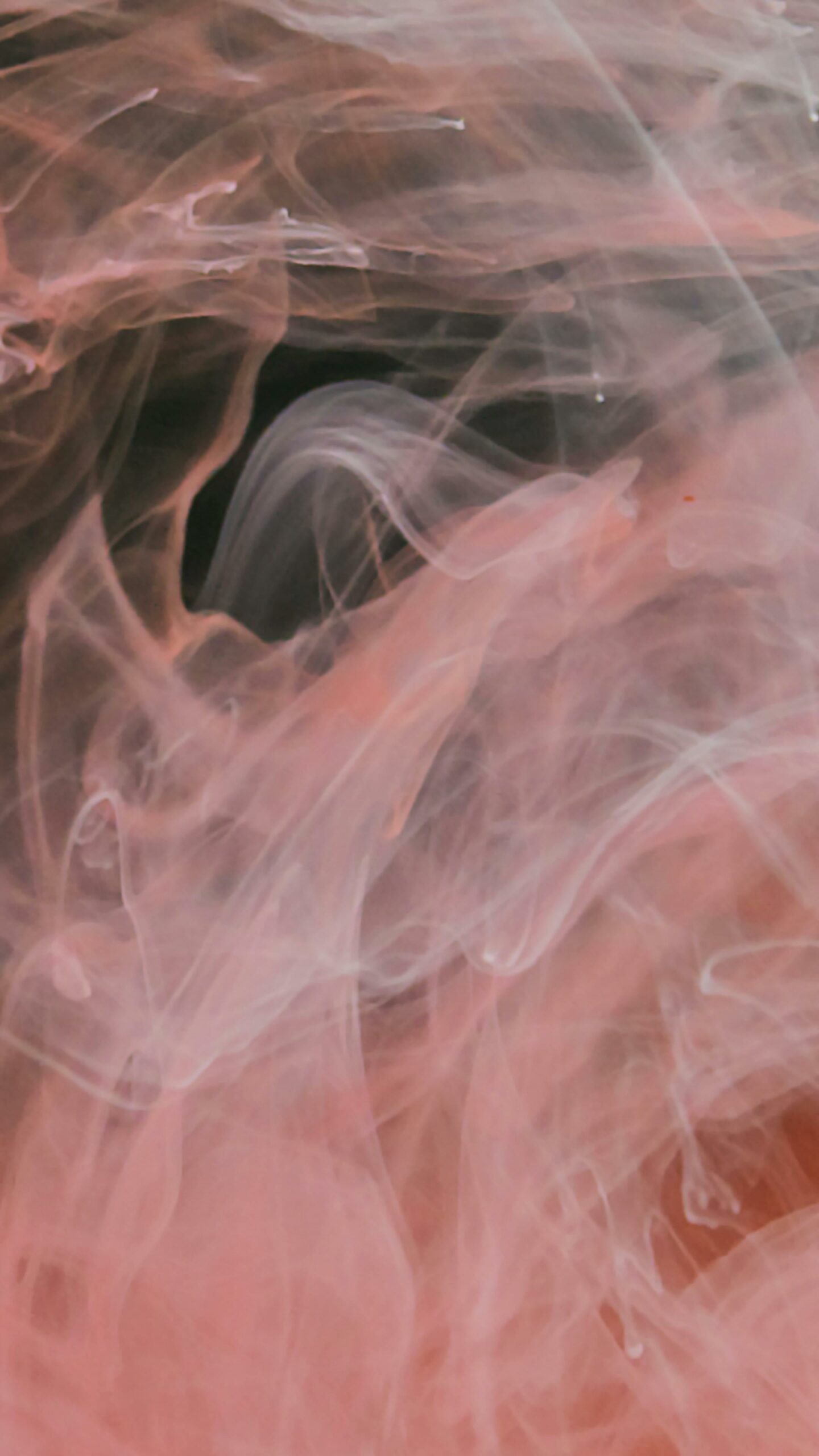Discover the magic behind the Meredith Duxbury Palette, a transformative tool that promises to unlock stunning colours for your art like never before. If you’ve ever wondered how to elevate your paintings with vibrant, harmonious hues, this palette might just be your new best friend. Whether you’re a seasoned artist or just starting, the Meredith Duxbury Palette techniques offer an unparalleled way to explore colour mixing, enabling you to create breathtaking masterpieces that truly stand out. Ready to dive into the world of rich, captivating colours? Then keep reading to uncover the secrets behind this game-changing palette!
Why is the Meredith Duxbury Palette creating such a buzz among artists worldwide? It’s all about simplicity and innovation. This palette is carefully designed to help artists achieve perfect colour balance, making the mixing process more intuitive and less frustrating. Imagine having access to a colour mixing system that helps you blend pigments effortlessly, producing consistent and vivid results every time. No more guesswork or muddy colours – just pure, stunning shades that breathe life into your artwork. Plus, the Meredith Duxbury Palette for beginners is incredibly user-friendly, ensuring that anyone can harness its power.
But what makes the Meredith Duxbury Palette stand out from traditional palettes? It’s the unique colour combinations and the clever layout that encourages experimentation and creativity. Artists are raving about how this palette helps them understand colour theory in a practical, hands-on way. So, if you’re keen to transform your art with professional-grade colour schemes and discover fresh inspiration, exploring the Meredith Duxbury Palette is a must. Stay tuned as we delve deeper into how this palette can revolutionise your painting experience!
Discover the Top 7 Stunning Colours in the Meredith Duxbury Palette for Vibrant Artwork
When it comes to creating vibrant artwork, the choice of colours plays a crucial role. Meredith Duxbury Palette has been gaining recognition among artists of all levels, especially in New York’s thriving art community. This palette unlocks stunning colours that brings life, depth, and emotion into every brushstroke. If you ever wondered what makes this palette so special, you’re not alone. Let’s dive into the top 7 stunning colours in the Meredith Duxbury Palette that can transform your artistic creations.
What is the Meredith Duxbury Palette?
Before we jump into the colours, it’s worth understanding what this palette actually is. Meredith Duxbury is an artist known for her unique approach to colour mixing and vibrancy. Her palette combines traditional pigments with modern colour theory, creating a set of colours that are both rich and versatile. This palette is not just a random selection of hues but carefully curated tones that interact beautifully when layered or blended.
Historically, artists had limited pigments available, often struggling to find the perfect shades. But with advancements in paint technology and creative minds like Duxbury, palettes now can offer colours that were once impossible to achieve. The Meredith Duxbury Palette reflects this evolution, making it a favourite among painters who want to stand out.
Top 7 Stunning Colours in the Meredith Duxbury Palette
Here’s a list of the standout colours that you’ll find in this palette. Each brings something unique to your artwork, whether you paint landscapes, portraits, or abstracts.
-
Cerulean Dream Blue
- A bright yet soft blue, reminiscent of clear skies over New York.
- Perfect for backgrounds and water scenes.
- It has a slight translucence that makes layering easy.
-
Burnt Sienna Sunset
- Deep reddish-brown with warm undertones.
- Adds warmth and depth to natural or urban scenes.
- Great for shading and creating texture.
-
Luminous Lemon Yellow
- A bright, almost glowing yellow.
- Useful for highlights and adding vibrancy.
- It’s less harsh than traditional yellows, blending effortlessly.
-
Viridian Forest Green
- A rich green with blue undertones.
- Ideal for foliage and nature-inspired pieces.
- Holds well under layers without dulling.
-
Magenta Velvet
- Deep, luxurious magenta with a velvety finish.
- Perfect for adding drama or focal points.
- Can be mixed to create purples and pinks.
-
Titanium White Pearl
- Not your typical white, this has a pearlescent quality.
- Useful for highlights and mixing to soften colours.
- Adds a subtle shimmer that enhances dimension.
-
Charcoal Graphite Grey
- A versatile dark grey with slight blue hints.
- Great for shadows and grounding compositions.
- Works well in monochromatic schemes.
Why These Colours Matter for Vibrant Artwork
These colours are not just pretty to look at. They work together in a way that makes your artwork come alive. For example, the contrast between Cerulean Dream Blue and Burnt Sienna Sunset creates a dynamic balance that can evoke mood and movement. Meanwhile, Magenta Velvet and Luminous Lemon Yellow offer bold accents that draw the eye.
The palette’s strength lies in its balance between bright and muted tones, allowing artists to experiment freely without colours clashing or becoming too flat. Different from standard palettes, the Meredith Duxbury Palette encourages mixing and layering. Its pigments keep their integrity, which means your colours won’t muddy or dull quickly.
Practical Uses and Tips for Artists
If you want to start using the Meredith Duxbury Palette, here are some practical tips:
- Layering: Start with lighter colours like Luminous Lemon Yellow or Titanium White Pearl, then build up with deeper tones such as Burnt Sienna Sunset or Charcoal Graphite Grey.
- Mixing: Try blending Magenta Velvet with Viridian Forest Green to create unusual purples and muted greens for landscapes or abstract pieces.
- Highlighting: Use Titanium White Pearl sparingly to add shimmer to wet paint; it creates a subtle but effective highlight.
- Mood Setting: Cerulean Dream Blue combined with Charcoal Graphite Grey can evoke calm or somber moods, ideal for portraits or cityscapes.
Comparison with Other Popular Palettes
To understand its uniqueness better, here’s a quick comparison between Meredith Duxbury Palette and two other well-known palettes:
| Feature | Meredith Duxbury Palette | Traditional Landscape Palette | Urban Street Art Palette |
|---|---|---|---|
| Colour Vibrancy | High | Moderate | Very High |
| Range of Warm |
How to Unlock the Full Potential of Your Meredith Duxbury Palette for British Artists
How to Unlock the Full Potential of Your Meredith Duxbury Palette for British Artists
For many British artists, finding the right palette that delivers vibrant, lasting colours can be a challenge. The Meredith Duxbury palette, known for its rich hues and versatile application, has become a preferred choice among painters across the UK. But how do you unlock its full potential? This guide will explore the secrets behind the Meredith Duxbury palette, offer practical tips, and provide a little history about this beloved tool.
What is the Meredith Duxbury Palette?
The Meredith Duxbury palette is a specially designed colour set that features a range of pigments, crafted to provide artists with a comprehensive spectrum for their work. Its origins date back to the mid-20th century when Meredith Duxbury, an English painter himself, wanted a palette that could meet the demands of both traditional and modern artistry.
Unlike generic palettes, the Meredith Duxbury palette includes colours that are formulated to maintain their vibrancy over time, resisting fading and dulling, which is ideal for artists who want their work to stand the test of time. It’s often praised for its smooth blending capabilities and the balance of warm and cool tones.
Why British Artists Should Consider the Meredith Duxbury Palette
- Tailored for diverse climates: The UK’s often damp and cool environment can affect paint drying times and texture. The Meredith Duxbury palette has pigments that hold up well in these conditions.
- Historical connection: Using a palette designed by a British artist adds a cultural layer to your work.
- Versatility: Suitable for oil, acrylic, and sometimes even watercolour mediums, it allows artists to experiment without switching palettes.
- Colour range: The palette offers a spectrum that covers earthy tones, vivid primaries, and subtle pastels, which are great for landscape, portrait, and abstract painting.
Unlock Stunning Colours: Tips and Tricks
-
Start with a Clean Palette Surface
Always ensure your palette is clean before laying down colours. Residual paint can muddy your hues, which is a common mistake even seasoned artists make. -
Arrange Colours Thoughtfully
Place warm colours (reds, yellows, oranges) on one side, cool colours (blues, greens, purples) on another. This helps in mixing clean colours rather than unintended browns. -
Use a Palette Knife for Mixing
Instead of brushes, try using a palette knife for mixing pigments. It gives better control over colour blending and avoids contaminating your brush with too many pigments at once. -
Experiment with Colour Layering
The Meredith Duxbury palette responds well to layering techniques. Apply thin layers of paint and allow them to dry before adding another. This can create stunning depth and luminosity in your artwork. -
Keep a Swatch Chart
Create a colour swatch chart for your palette. Paint small patches of each colour and note how they look when dry. This helps you predict how colours will behave on your canvas.
Historical Context of the Palette and Its Maker
Meredith Duxbury was a notable figure in the British art scene during the 1950s and 60s. His work often combined traditional British realism with modern expressionist touches. Dissatisfied with the limited palettes available at the time, he collaborated with pigment manufacturers to develop a set of colours that reflected his artistic vision.
The palette became popular in art schools and studios across the UK, influencing generations of painters. Its reputation for durability and vibrancy made it a staple, especially among artists focused on landscapes, a genre deeply tied to British cultural heritage.
Comparing Meredith Duxbury Palette with Other Popular Palettes
| Feature | Meredith Duxbury Palette | Winsor & Newton Palette | Sennelier Palette |
|---|---|---|---|
| Colour Vibrancy | High, long-lasting | High | Very high, fine pigments |
| Range of Colours | Comprehensive, balanced | Broad, traditional | Rich, artist-grade |
| Suitability | Oil, acrylic, some watercolour | Oil, acrylic | Primarily oil |
| Drying Time | Moderate, suited for UK climate | Variable | Slower drying |
| Price Point | Mid-range | Mid to high | High |
Practical Examples of Using the Palette
- Landscape Painting: Use the earthy tones like Burnt Sienna and Yellow Ochre for natural ground textures, and blend with Ultramarine Blue for skies. Layering these colours allows a soft transition that mimics natural light.
- Portraiture: The warm reds and cool blues in the palette help create realistic skin tones. Mixing small amounts of complementary colours avoids flatness.
- Abstract Work: The bold primaries can be mixed to create unexpected shades.
The Ultimate Guide to Using Meredith Duxbury Palette Colours for Unique Art Creations
The world of colour in art is always evolving, but sometimes, you stumble upon a palette that just changes everything. The Meredith Duxbury Palette is one of those rare gems. If you’re an artist in New York or anywhere else, wanting to unlock stunning colours for your art, this guide is for you. We’re diving into the magic behind the Meredith Duxbury Palette colours, how to use them, and why they might be your new favourite tool. You don’t need to be a professional painter or a colour theory expert; just a creative soul ready to experiment and create unique art pieces.
What is the Meredith Duxbury Palette?
Meredith Duxbury is an artist known for her vibrant and expressive use of colour. Her palette isn’t just a random selection of paints; it’s a thoughtful combination of hues designed to bring art alive with a distinctive vibrancy. The palette typically features a mix of warm and cool tones, earth colours, and some unexpected pops that create stunning contrasts.
Historically, palettes have been influenced by artists’ surroundings, available pigments, and cultural trends. Meredith Duxbury’s choice of colours reflects a modern yet timeless appeal, blending traditional tones with contemporary vibrancy. This fusion lets artists explore both naturalistic and abstract styles easily.
Key Colours in the Meredith Duxbury Palette
Here’s a quick look at some essential colours you’ll find in the palette, and what makes them special:
| Colour Name | Description | Use Case in Art |
|---|---|---|
| Cadmium Red | Rich, warm red with slight orange | Great for bold accents and warmth |
| Phthalo Blue | Deep, intense blue | Perfect for skies and shadows |
| Yellow Ochre | Earthy, muted yellow | Natural landscapes and skin tones |
| Burnt Sienna | Warm reddish brown | Adding depth and texture |
| Titanium White | Bright white | Mixing and highlights |
| Emerald Green | Vivid green with blue undertones | Foliage and vibrant details |
The balance between these colours give you a versatile toolkit, whether you want to paint a realistic portrait or an abstract piece. You see, the beauty is how they blend and contrast, not just their individual strength.
Why Choose Meredith Duxbury Palette Colours?
Many artist palettes exist, but the Meredith Duxbury Palette stands out for several reasons:
- Unique colour harmony that feels both natural and eye-catching
- Versatility for different painting styles and mediums
- Colours that stay vibrant over time, resisting fading
- Easy to mix for creating custom shades without muddying
Compared to traditional palettes like the primary red, blue, and yellow basic set, Duxbury’s selections are more curated. She includes colours that complement each other perfectly which means less guesswork when mixing.
How to Use Meredith Duxbury Palette Colours Effectively
Using these colours properly isn’t just about slapping paint on canvas. Here are some practical tips that artists have found useful:
- Start with a limited set: Don’t overwhelm yourself with all colours at once. Pick 4-5 main ones and experiment mixing.
- Layering colours: Apply thin layers to build depth rather than thick blobs. This helps colours interact beautifully.
- Experiment with temperature: Warm colours like Cadmium Red can be balanced with cooler ones like Phthalo Blue to create mood.
- Use earth tones for grounding: Yellow Ochre and Burnt Sienna can anchor your composition and add natural feeling.
- Don’t forget white: Titanium White isn’t just for lightening but also for softening harsh edges.
Practical Example: Creating a Sunset Landscape
Imagine you want paint a sunset using Meredith Duxbury colours, here’s a quick outline how you might proceed:
- Base layer: Use Phthalo Blue for the early evening sky
- Blend in Cadmium Red near horizon for warm glow
- Add Yellow Ochre and Burnt Sienna in foreground for earth and trees
- Use Titanium White sparingly to highlight clouds
- Emerald Green to add contrast in foliage
This combination will give your painting a lively yet harmonious feeling, something hard to achieve with ordinary palettes.
Comparing Meredith Duxbury Palette With Other Popular Palettes
| Palette Type | Colour Variety | Best For | Notes |
|---|---|---|---|
| Meredith Duxbury Palette | Balanced mix of warm & cool | Versatile, expressive art | Vibrant, harmonious tones |
| Traditional Primary Palette | Red, Blue, Yellow basics | Beginners, simple mixing | Limited in tonal range |
| Earth Tone Palette | Browns, ochres, muted hues | Naturalistic, landscapes | Less vibrant but realistic |
| Bright Neon Palette | Fluorescent, eye-catching | Abstract, modern art | Bold but less subtle |
Why Meredith Duxbury Palette Is a Game-Changer for Contemporary British Painters
In the bustling art scenes of New York and beyond, contemporary British painters have been turning heads with their vibrant and emotive works. A big part of their success and innovation comes from tools that inspire creativity—among them, the Meredith Duxbury Palette has become a true game-changer. This palette is not just another mixing tray; it unlocks stunning colours for artists, helping them push the boundaries of their craft in ways previously unseen. But what exactly makes the Meredith Duxbury Palette so special? And why is it gaining such traction among painters across the pond and in international circles?
What Is the Meredith Duxbury Palette?
The Meredith Duxbury Palette is a specially designed artist’s palette created by Meredith Duxbury, an acclaimed contemporary British painter herself. Unlike traditional palettes, which often come in simple wooden or plastic designs, this palette offers a unique structure and layout. It allows painters to mix colours more freely and efficiently, reducing waste while enhancing the vibrancy of the pigments.
Its design combines both functionality and an aesthetic appeal that resonates with modern artists, who seek both practical tools and inspiration in their materials.
Historical Context: Palettes in Painting
Palettes have been central to painting for centuries, evolving from simple wooden boards to more sophisticated surfaces.
- Ancient times: Stone or wood slabs were common.
- Renaissance: Palettes became smaller, easier to handle, often oval-shaped.
- Modern era: Introduction of plastic and ceramic palettes with wells for different colours.
- Contemporary: Artists demand palettes that accommodate new paint types like acrylics and watercolours, plus ergonomic designs.
The Meredith Duxbury Palette fits in well with this evolution but stands out by addressing specific needs of contemporary painters who want quick access to a broad range of colours and smooth mixing without contamination.
Why Is It A Game-Changer for Contemporary British Painters?
Several factors makes the Meredith Duxbury Palette revolutionary. For one, it encourages experimentation with colour, which is a hallmark of the British contemporary art scene. Painters often deal with subtle hues and complex layering techniques, and this palette supports those needs by:
- Offering a large mixing area that prevents colours from muddying.
- Having separate compartments for primary and secondary colours, which helps in maintaining the purity of each pigment.
- Using high-quality, non-porous materials, which makes cleaning easier and prolongs the palette’s life.
- Being lightweight and portable, allowing artists to work on location or in different studios without hassle.
These features help artists focus more on their creative process rather than technical difficulties.
Unlock Stunning Colours For Your Art
The palette’s design is meant to unlock stunning colours for your art, simply by making it easier to experiment with blends and shades. Artists can achieve colours that are richer and more nuanced, which can dramatically change the overall feel of a painting.
Here’s what the palette offers to colour mixing:
- Balanced layout: Helps painters quickly find and mix complementary colours.
- Controlled blending: Avoids accidental mixing of incompatible hues.
- Space for layering: Artists can pre-mix several shades before applying strokes.
- Compatibility: Works well with oil, acrylic, and water-based paints.
The palette’s versatility means artists are not limited by their materials, but rather empowered by them.
Practical Examples of Usage
Imagine a contemporary British painter working on a cityscape at dawn. The light is soft, with subtle pinks, blues, and greys. Using the Meredith Duxbury Palette, the artist can:
- Place primary colours in designated wells.
- Mix gentle pastel pinks and blues in the central mixing area without worrying about cross-contamination.
- Quickly switch between colours without wasting paint.
- Achieve a smooth gradient that captures the delicate morning atmosphere.
This ease and efficiency allow painters to capture fleeting moments with more authenticity and less frustration.
Comparison Table: Meredith Duxbury Palette vs Traditional Palettes
| Feature | Meredith Duxbury Palette | Traditional Wooden/Plastic Palette |
|---|---|---|
| Material | Non-porous, easy to clean | Porous wood or plastic, harder to clean |
| Mixing Space | Large, compartmentalised | Usually small, open mixing area |
| Portability | Lightweight, ergonomic design | Often heavier and less portable |
| Colour Control | High – separate wells and sections | Low – colours can easily mix unintentionally |
| Durability | Long-lasting surface | Can degrade or warp over time |
| Suitable For | Oil, acrylic, watercolours | Mostly oil and acrylic |
Why British Painters Are Particularly Drawn To It
British art often plays with subtle light, shadow, and intricate colour palettes, reflecting the country’s rich cultural and natural heritage. The Meredith Duxbury Palette matches this
Step-by-Step Tips to Master Colour Blending with Meredith Duxbury Palette Shades
Mastering colour blending can be a game changer for artists, especially when you’re working with a versatile set like the Meredith Duxbury Palette. This palette, known for its rich, vibrant hues and smooth consistency, allows painters to create stunning effects that bring their art to life. If you been struggling with colour transitions or want to unlock the potential of your palette, here’s a step-by-step guide to help you master colour blending using Meredith Duxbury Palette shades.
What Makes the Meredith Duxbury Palette Special?
The Meredith Duxbury Palette is celebrated amongst artists for its unique formulation and carefully selected colours. Meredith Duxbury, an established artist herself, designed this palette to offer a balance of warm and cool shades with excellent pigment quality. It includes:
- Deep blues and greens that are perfect for natural scenes
- Bright reds and oranges that add vibrancy
- Earthy browns and yellows suited for portraits and landscapes
- Subtle neutrals to soften harsh transitions
This palette gives you the ability to create a wide range of colours just by mixing, which is why understanding how to blend them effectively is key.
A Brief History of Colour Blending in Art
Colour blending is not a new technique; it dates back centuries to the Renaissance, where artists like Leonardo da Vinci and Michelangelo explored ways to mix pigments for softer gradients and realistic shadows. Traditionally, blending was done with brushes on wet paint or by layering glazes. Today, with synthetic pigments and modern palettes like Meredith Duxbury’s, blending has become more accessible and versatile for contemporary painters.
Step-by-Step Tips to Blend Colours Like a Pro
-
Prepare Your Workspace and Materials
- Use a clean palette, ideally white or a neutral colour, so you can see the true hue of your mixes.
- Have brushes of different sizes ready: flat for broad strokes, round for detail.
- Keep a rag or paper towel nearby for wiping brushes between colours.
-
Understand Your Colours
- Before mixing, test each shade from the Meredith Duxbury Palette individually on a scrap piece of paper.
- Notice undertones and opacity; some colours lean cooler (like phthalo blue), some are warmer (cadmium red).
-
Mix in Small Amounts
- Start with tiny amounts of paint when mixing to avoid wasting colours.
- Use a palette knife to blend colours smoothly on your palette.
- Gradually add small increments of one colour into another to control the tone.
-
Practice Gradient Blending
- Lay two colours side by side on your palette.
- With a clean brush, drag one colour into the other repeatedly until they form a gradient.
- This technique helps create seamless transitions on your canvas.
-
Use Mediums to Enhance Blending
- Adding a blending medium or a bit of linseed oil (for oil paints) can extend drying time and make colours easier to mix on the canvas.
- For acrylics, water or acrylic retarders help slow drying.
-
Experiment with Layering
- Sometimes, it’s easier to build colour depth by layering thin washes rather than mixing on the palette.
- Let each layer dry partially before adding the next to avoid muddiness.
Practical Example: Blending a Sunset with Meredith Duxbury Palette
Try this simple project to practice your blending skills:
- Use cadmium yellow, cadmium red, and ultramarine blue from the palette.
- Start by applying a broad yellow band at the horizon.
- Next, blend a reddish-orange band above the yellow by mixing cadmium red and cadmium yellow.
- Finally, create the twilight sky by blending ultramarine blue into the red band.
- Use a dry brush to soften the edges where colours meet.
By practising hands-on, you will understand how different hues interact and how the Meredith Duxbury Palette’s unique pigments respond to each other.
Comparing Meredith Duxbury Palette to Other Popular Palettes
| Aspect | Meredith Duxbury Palette | Winsor & Newton Cotman | Sennelier Artists’ Oil Set |
|---|---|---|---|
| Pigment Quality | High-quality, vibrant pigments | Good pigment, budget-friendly | Exceptional, rich pigments |
| Colour Range | Balanced warm/cool selection | Wide, but some colours weaker | Wide and intense |
| Blending Ease | Smooth consistency, easy to blend | Slightly chalky sometimes | Creamy and buttery |
| Price Point | Mid-range | Affordable | Premium |
| Ideal For | Beginners to professionals | Students and hobbyists | Professional artists |
This comparison shows why Meredith Duxbury Palette is a favourite for many New York artists who want quality without breaking the bank.
Common Mistakes When Blending Colours
Conclusion
In summary, the Meredith Duxbury palette stands out as a versatile and thoughtfully curated collection that caters to a wide range of makeup enthusiasts. With its carefully selected shades, the palette offers both everyday neutrals and bold pops of color, making it suitable for creating diverse looks—from subtle daytime elegance to striking evening glamour. The high-quality formulation ensures smooth application, excellent pigmentation, and long-lasting wear, which enhances its appeal to both beginners and professionals alike. Whether you’re seeking a reliable staple for your makeup bag or an inspiring array of hues to experiment with, the Meredith Duxbury palette delivers on all fronts. Embracing this palette not only elevates your beauty routine but also invites you to express your creativity with confidence. If you’re ready to transform your makeup game, exploring the Meredith Duxbury palette might just be the perfect next step.






